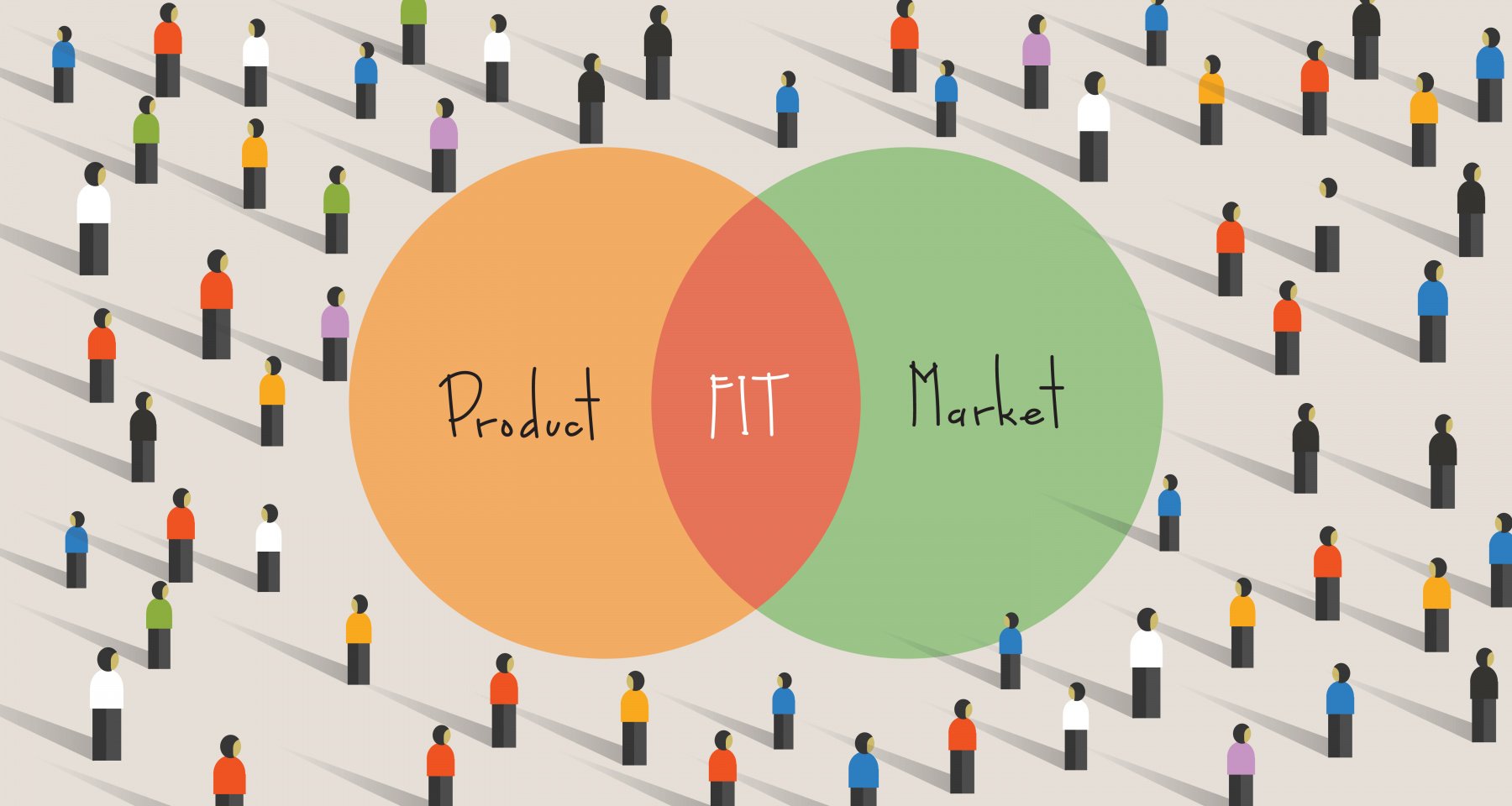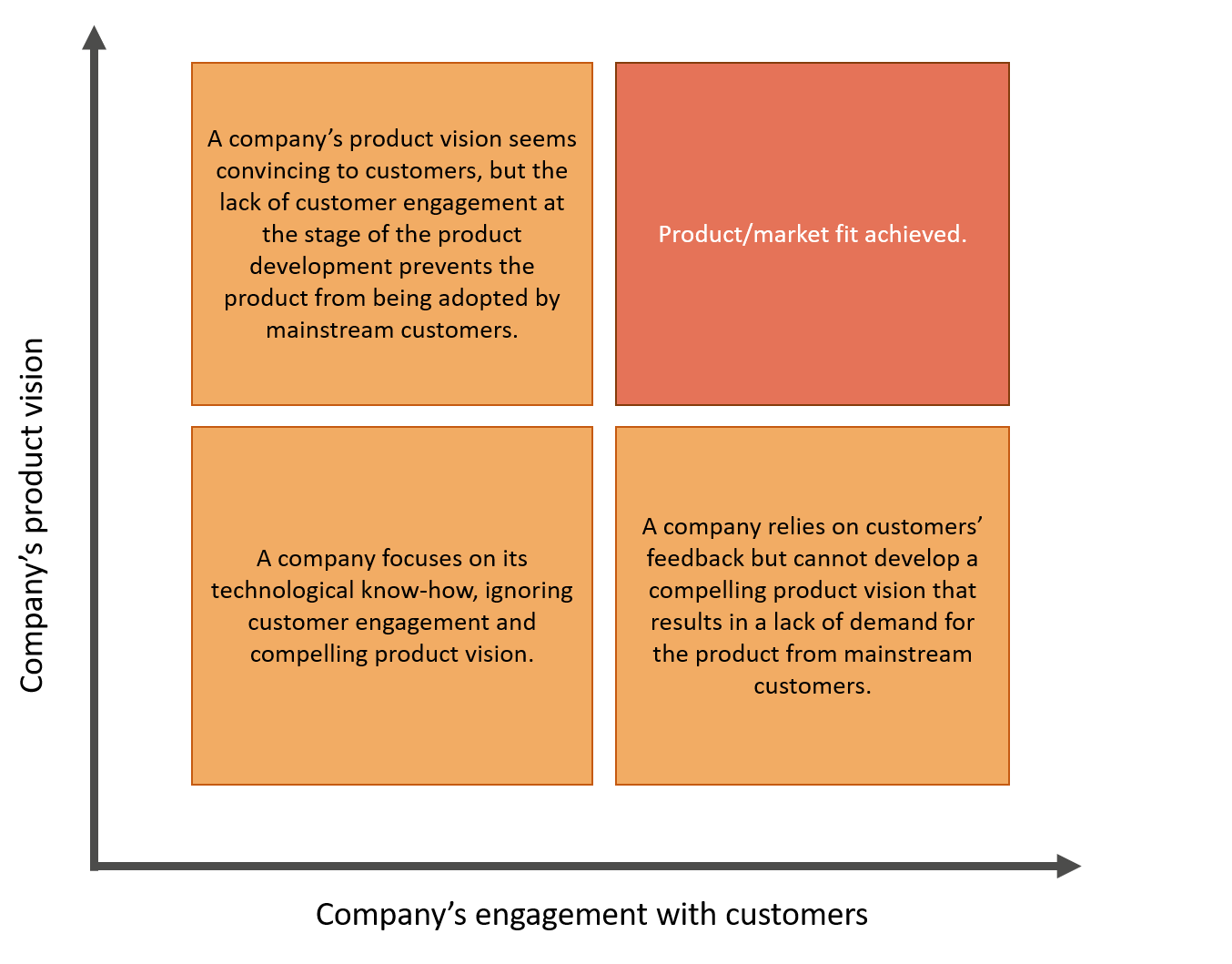
Product/market fit (PMF) is crucial for company success. According to numerous researches, the lack of market demand is the leading cause of startup failure. In this article, we will talk about ways of achieving PMF within the 1C ecosystem with reference to the experience of our developer partners, namely ITLand, that created a line of project management products built on the 1C platform and has been successfully marketing them both in Russia and some other countries.
What is a Product/Market Fit?
PMF is a way to measure how a product fits with customer expectations. If a company is missing it, the sales turn out to be very low, with no hope for the project’s success.
To some extent, we can define PMF as a combination of three elements: customer, need, and solution. Before you start making a new product, it is vital to find the answers to the three questions:
- Who are your customers?
- What customer need are you providing for?
- Are customers willing to pay for your solution to cover their need?
How Does Utilization of the 1C Ecosystem Help in Achieving PMF?
One of the possible scenarios for a company wishing to enter a market is finding a fresh idea for a brand new product, creating a prototype, testing it, and making the product ready to get to the market. It is a standard trajectory of startup growth. The success of a business solution often depends on the provider’s ability to dive into customers’ business needs and focus on creating functionality that clearly creates value for their customers’ business.

Adam Fisher, an investor in technology companies, suggested a diagram to evaluate how a company’s product vision aligns with customer engagement to help companies understand their place on the path toward PMF. The X-axis shows the company’s engagement with customers, how well it understands its customers’ businesses, priorities, needs, and issues. The Y-axis reflects how convincing and attractive the company’s product vision is for potential customers and users. Simply listening to customers or having a clear vision of the product is not enough. You need both.
Within the 1C ecosystem, partners who deploy standard solutions and develop their solutions on the 1C platform often turn out to be one and the same company. It happens because deployment partners, even when dealing with standard 1C solutions, need to customize and adapt them to customer requirements, and they have deep expertise in software development by default.
Close collaboration with industry customers in the process of deploying solutions to some extent puts partners in the role of business consultants and helps them gain a deep understanding of customers’ business scenarios and priorities. The industry expertise acquired by partners in previous deployments plus feature-rich product bundled with customers’ smooth deployment experience resulting in positive feedback makes the product more attractive for future customers (which actually is PMF).
How to Find an Idea for Your Product?
One of the possible ways to discover functionality that the market desires is to watch how people work on production sites or in warehouses. For example, analyze the path of a product from the moment of order placement to dispatch of the final product to customers. You aim to identify a point where an enterprise loses money. It can come through time loss, overlapping functions, manual jobs, lack of coordination between departments, etc.
It is marvelous if you can calculate such losses in money. Should your customer agree with the evaluation, this gives the first ray of hope. Your foremost goal for this stage is to identify if the customer is willing to pay you to take care of the identified need. If so, it is good enough to assume that other similar customers might share this vision.
One more easy and obvious way for 1C partners is to analyze frequent requests of customers that purchase customized standard solutions. As you do the analysis, you are sure to discover that some similar requests come from different customers. Take this pool of recurring needs and pick the most promising as a basis for your future product.
“As we were customizing and deploying 1C automation solutions for our customers, we were constantly searching for an idea of our product, driven by the desire to move from deployment to development. To discover the idea for our project management solution, we had to analyze more than 200 overlapping requests from many of our customers”, says Sergei Lebedev, ITLand CEO.
Almost all areas of activities are pretty well taken care of and dominated by big companies. Still, there might be some niches at intersections of such areas. And this is where you can look for an idea for your product.
One of the real-life examples here is a 1C partner solution operating as a bridge between accounting software and data collection terminals. Their mobile application connects data collection terminals with warehouse or production personnel 1C workstations. Data collection terminals obtain data and send it to workstations to record it into the 1C system as part of the primary accounting process.
How to Define Functional Requirement for a New Product?
Defining functional requirements for a new product is a puzzle consisting of several elements: customer requirements, technologies, and methods applicable for your solution, competitor solutions, as well as features nobody ever implemented or even designed but capable of giving you a breakthrough product. When you have decided about your prototype functionality, it is a good idea to show it to potential customers and find out what they think about it.
It might turn out that you compete with solutions by major world vendors that, as a rule, do not fully take into account the peculiarities of local markets. If so, you can get a competitive advantage by making your product a better fit for a specific local market.
By analyzing competitor products, you can get some ideas regarding the functionality of your product. In other words, you can borrow strong features from them.
Anyway, in order to identify the strong and weak points of competing solutions, you need to rely on feedback provided by users of this specific product. And here, 1C partners come to enjoy the benefits of close collaboration with customers.
“To define functional requirements for our project management product, we had to jointly consider customer requirements for project management and financial management solutions. At the same time, we worked with design institutions, studied project management technologies and solutions offered by major competitors.
Customers shared their opinions on deficiencies in competitors’ project technologies and solutions for their businesses and the local market as a whole. They explained why these solutions did not work for them and what had to be done differently. They also shared their opinion on the drafts for our solution. These conversations were an excellent growth medium for our product”, says Sergei.
Meeting the right people on the customers’ side: potential users and decision-makers prior to defining the basics of your solution is crucial for creating the right product.
MVP
So you’ve got an idea and are willing to proceed with making a product. You need to create a prototype and test it on a potential customer. Here we immediately face several issues. How do I quickly build the prototype? Where do I find the financing? How to start a pilot project?
Here is one of the possible ways.
Using the 1C platform, you can rapidly build a prototype and then modify it with ease, as requested by your customer. The platform has basic functionality to build multiplatform accounting and business applications that can run on desktops, mobile devices, or simply web and support integration with almost anything. It saves a lot of time and investment at the development stage.
“Should you decide to create a product without a ready-to-use technology platform, you ought to invest a lot of resources into developing the core that offers required features. Even if we are talking about a core customized for a specific task, it still takes a long time and costs a lot of money. With the 1C platform, you simply skip this step.
For example, customers often ask if your solution runs on Unix or macOS, or whether it is possible to run it on various database servers, and so on. The answer is easy. Sure, you can! Support of multiple platforms is a huge advantage. As developers do not need to invest their time into it, it truly speeds up the development process.
Also, as you develop your product, it is helpful to be in touch with the 1C team. They can provide assistance and even share some of their latest developments. 1C Company offers ready-made solutions that you can rapidly integrate into your MVP. 1C:Analytics is one of them. Integration with third-party BI systems can be time and labor-consuming. And here we show our customers a quick solution naturally causing a wow-effect,” says Sergei.
As for financing, in the vast majority of cases, customers have no interest in paying for a pilot solution. Instead, they prefer purchasing licenses for the product ready for use. Nevertheless, you can build the initial version of your MVP as part of a customer’s project relying on your know-how from previous projects.
The role of a pilot project is to evaluate your product’s viability in real-life scenarios and prove it be fully functional. It is essential to find the right customer for it. You need someone with an open mind who is willing to experiment. Like consumers, corporate customers range from innovators to laggards. And you certainly need innovators for your pilot project.
Am I in PMF and Ready to Scale?
Many indicators let you know that your product has gained PMF. They include growth of regular customer base, good NPS, high retention rate, and others. Still, at the early stages, before you have a substantial regular customer base, the best indicator you are going in the right direction are the recommendations of your customers coming through word of mouth.
But being in PMF state is not sufficient to decide to scale. It is important to understand that in addition to the costs you have incurred to develop the product, you will have to invest at least the same amount of time and finances in launching and promoting it.
1C partners often finance their new product projects themselves even if they do not have sufficient funds for this purpose. They do it by allocating some of their specialists. Thus, where they have 20 specialists, they assign 5 of them to develop and promote the new product.
How to Stay within PMF Over Time?
Achieving PMF is a cycle consisting of finding a new value, improving your product, scaling, getting clients, and evaluating their feedback.
The product value comes not just from the IT solution itself but also from such complimentary items as user training, study materials, consulting, technical support, and logistics. And these are essential components of the product as a whole.
“We have been improving our solution for more than 15 years. Initially, it was about development, launch, obtaining feedback, then replication and scaling. Before putting your solution to work, people need to be sure they get value and excellent results. And for us, it means that the product and jobs we do should be of top-notch quality. Achieving it takes a lot of effort and time, requires the most qualified specialists and willingness to carefully study customer needs, as well as understanding how we can provide for these needs. It takes to monitor trends, analyze industry and customer specifics to discover what their businesses need most. And all of this requires an ongoing long-term commitment,” says Sergei.





